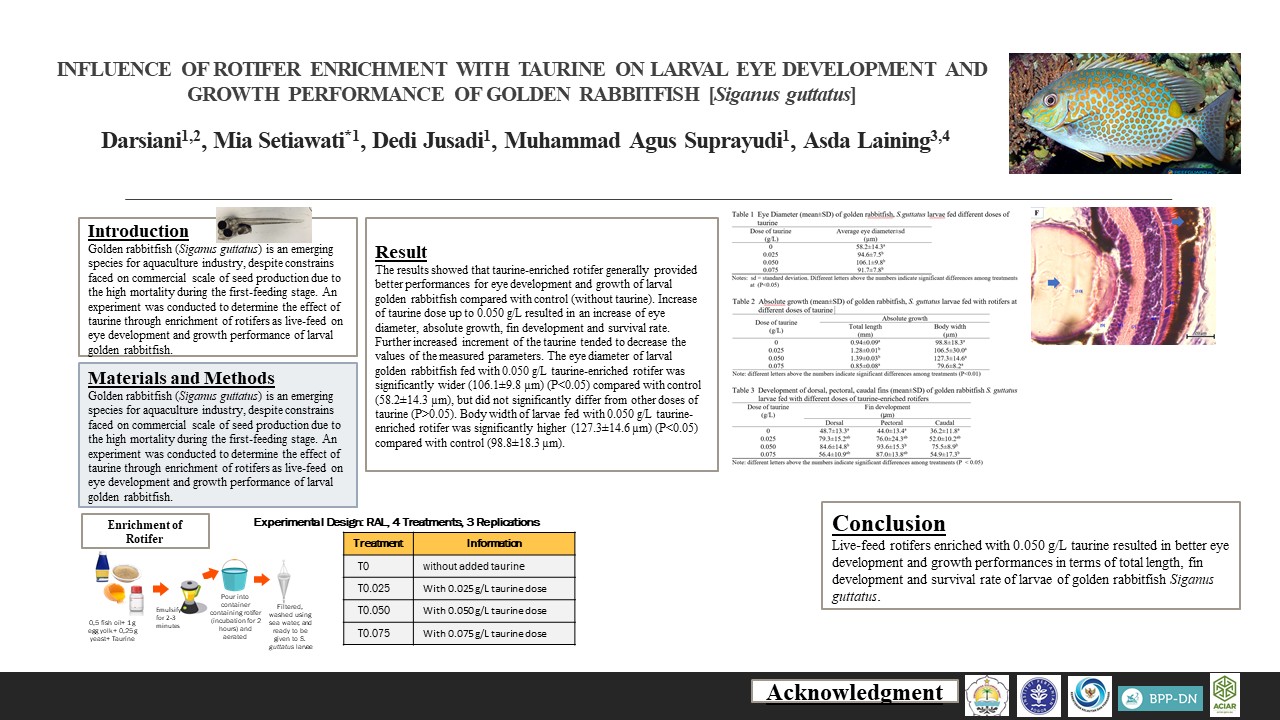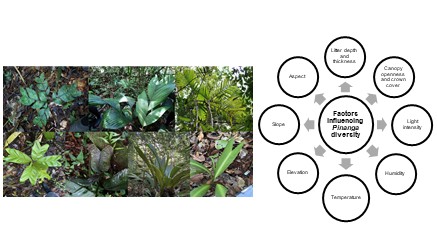POTENTIAL OF MANGROVE SEEDLINGS FOR UTILIZATION IN THE MAINTENANCE OF ENVIRONMENTAL QUALITY WITHIN SILVOFISHERY PONDS
Downloads
Silvofishery system has been applied to aquaculture activities and it has been developed in the coastal area of Semarang City, Indonesia. However, information on the initial development of silvofishery ponds concerning the functionality of mangrove seedlings on environmental quality of fish ponds had not been studied. This experiment aimed to determine the environmental conditions of silvofishery ponds and to analyze the effect of seedling stands of mangrove on environmental quality control. The presence of mangrove seedlings caused the decrease of temperature and the increase of salinity. ANOVA showed that mangrove species significantly affected water salinity, while canal width and mangrove species significantly affected turbidity and pH. Regression analysis showed that the height of Rhizophora mucronata had partially significant effect on Total Suspended Solids (TSS), Organic Matter (OM), as well as Nitrogen (N) and Phosphorus (P) concentrations. Diameter of R. mucronata affected temperature. The height and diameter of Avicennia marina affected Dissolved Oxygen (DO). Mixed populations of A. marina and R. mucronata had an effect on water turbidity, while population of only A. marina had a partial effect on water salinity. R. mucronata seedlings had dominant effect on the environmental quality. Mangrove seedlings can be used as environmental quality control within silvofishery ponds to maintain optimal conditions for fish growth. The application of silvofishery in early stage of mangrove seedlings should consider the more abundant plantation of R. mucronata compared to A. marina.
Keywords: Canal width, environmental quality, seedling, silvofishery, species composition
Downloads
Authors who publish with this journal agree with the following terms:
- Authors retain copyright and grant the journal right of first publication, with the work 1 year after publication simultaneously licensed under a Creative Commons attribution-noncommerical-noderivates 4.0 International License that allows others to share, copy and redistribute the work in any medium or format, but only where the use is for non-commercial purposes and an acknowledgement of the work's authorship and initial publication in this journal is mentioned.
- Authors are able to enter into separate, additional contractual arrangements for the non-exclusive distribution of the journal's published version of the work (e.g., post it to an institutional repository or publish it in a book), with an acknowledgement of its initial publication in this journal.
- Authors are permitted and encouraged to post their work online (e.g., in institutional repositories or on their website) prior to and during the submission process, as it can lead to productive exchanges, as well as earlier and greater citation of published work (See The Effect of Open Access).





















